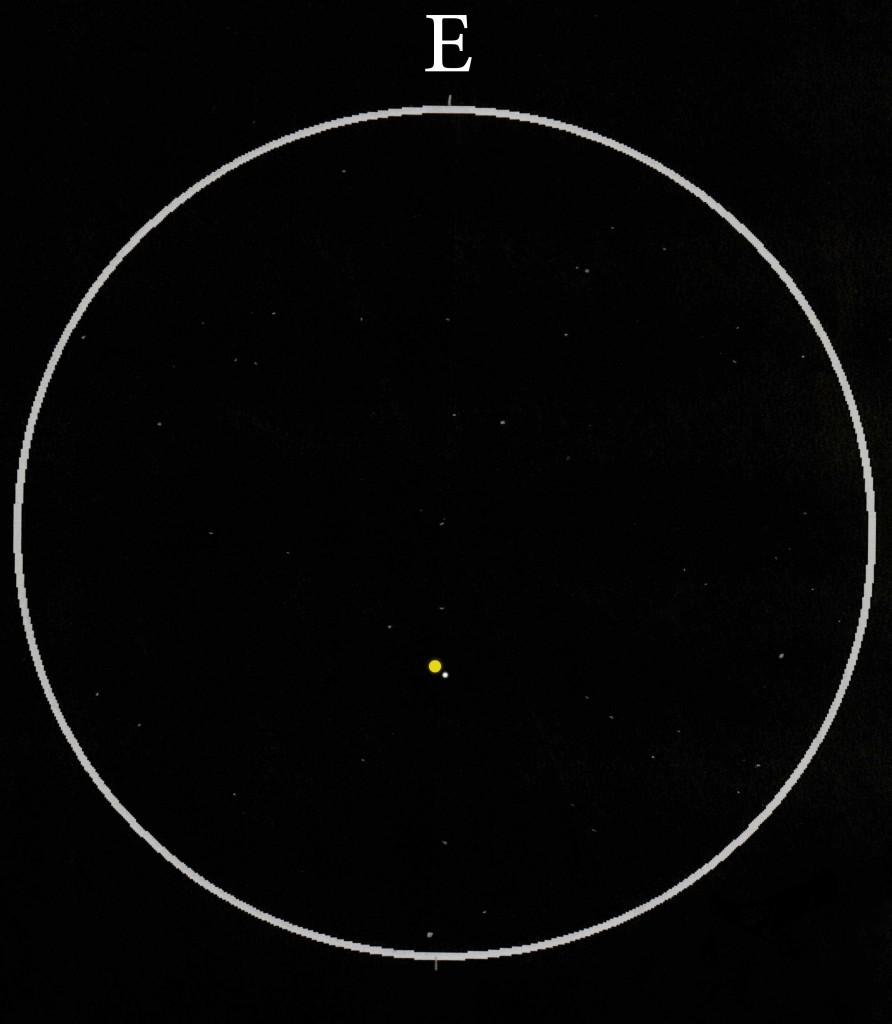
eta cassiopeiae
double star
sep=11
location:roudehen-tehran-iran
pencil sketch
inverted
medicore seeing:4.5
120x
orion 10 inch telescope
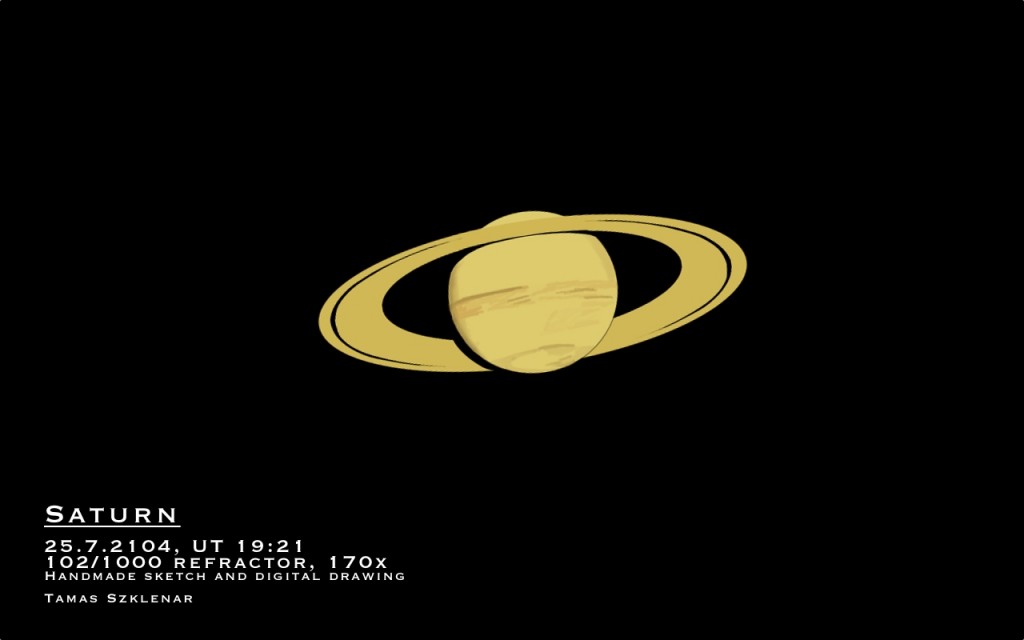
– Object name: Saturn
– Object type: planet
– Location: Tarján, Hungary
– Date: 25.7.2014., 19:21-19:37 UT
– Media: sketch with graphite pencil, finished with a drawing software
After weeks of cloudy weather I was finally able to make a sketch about this beatiful planet.
The drawing and the writing of my notes took approximately 15 minutes. The skies transparency was quite good, but the air conditions were bad, so I had to wait long to see some details. I used a 102/1000 Celestron OmniXLT refractor and 170x magnification during the observation.
After the sketch was done I watched some other object on the sky, so I finished my draw at home, using my laptop.
I hope you like it.
Tamas
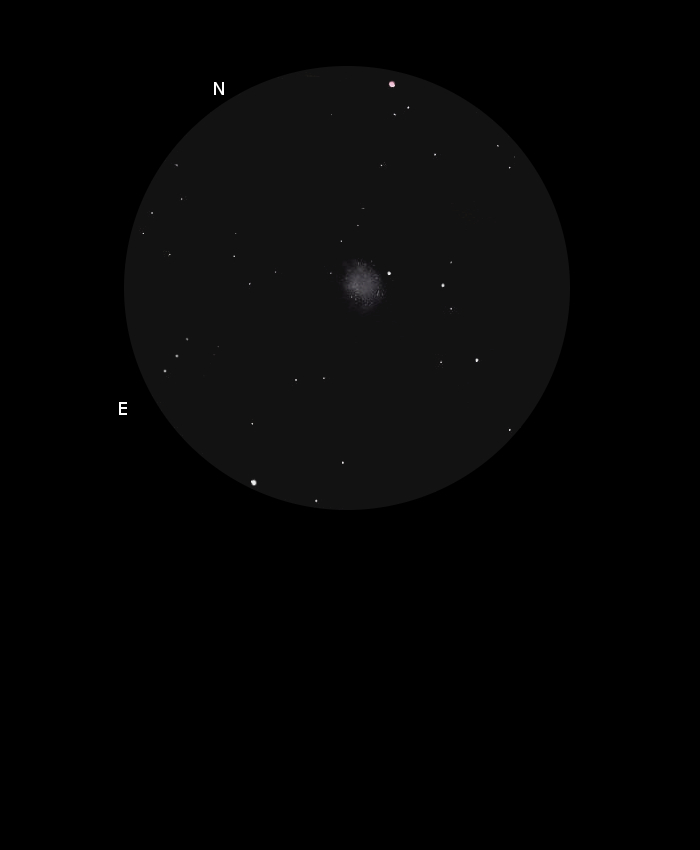
Nombre del Objeto: M-56; NGC 6779
Tipo de Objeto: Cúmulo Globular
Constelación: Lyra
Ubicación: La Hija de Dios, Ávila (España)
Fecha: 27-7-2014
Medios: Lapiz de grafito 0,5B, difumino, papel blanco y procesado con GIMP 2.8 para invertir
Magnitud visual 5 en el cenit con un cielo rural-urbano con noche estable y nada de viento
Telescopio: Refractor Acromático 152mm; F/7.9 sobre montura ecuatorial HEQ5 Pro y Ocular Televue 11mm; 109X; Campo Real: 1.1º
Saludos y gracias
Object Name: M-56; NGC 6779
Object Type: Globular Cluster
Constellation: Lyra
Location: The Daughter of God, Ávila (Spain)
Date: 27/07/2014
Media: Pencil graphite 0.5 B, stump, white paper and processed with GIMP 2.8 for inverting
Visual magnitude 5 on the peak with rural-urban night sky with stable and no wind
Telescope: Achromatic Refractor 152mm; F/7.9 on HEQ5 Pro equatorial mount and eyepiece Televue 11mm; 109X; Campo Real: 1.1 º
Greetings and thanks
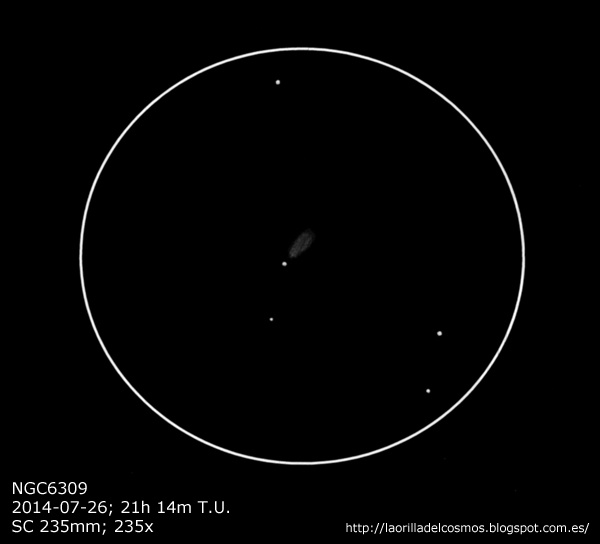
NGC6309 – Exclamation Mark Nebula
Object Type: Planetary Nebula
Location: Tarragona – Spain
NGC6309 is one of the two planetary nebula with the nickname “The Box”, (the other is NGC6445 in Sagittarius), but after my experience with it, I prefer name NGC6309 like Stephen J. O’Meara in his book “The secret Deep”: The Exclamation Mark.
For more details of my observation you can visit my blog:
http://laorilladelcosmos.blogspot.com.es/2014/08/ngc6309-nebulosa-planetaria-en-ophiuchus.html
Date and Time: 2014-07-26, 21h 14m UT
Telescope: SC Celestron 9.25″ (235mm)
Eyepiece: 10mm (235x)
White paper, HB2 graphite pencil, and scanned and inverted with Photoshop
Seeing: 3/5 (5 the best)
Transparency: Clear. Some wind. Rural Skies.
Location Constellation: Ophiuchus
Position: R.A. 17h 14m
Dec. -12° 54′
Thank you and best regards.
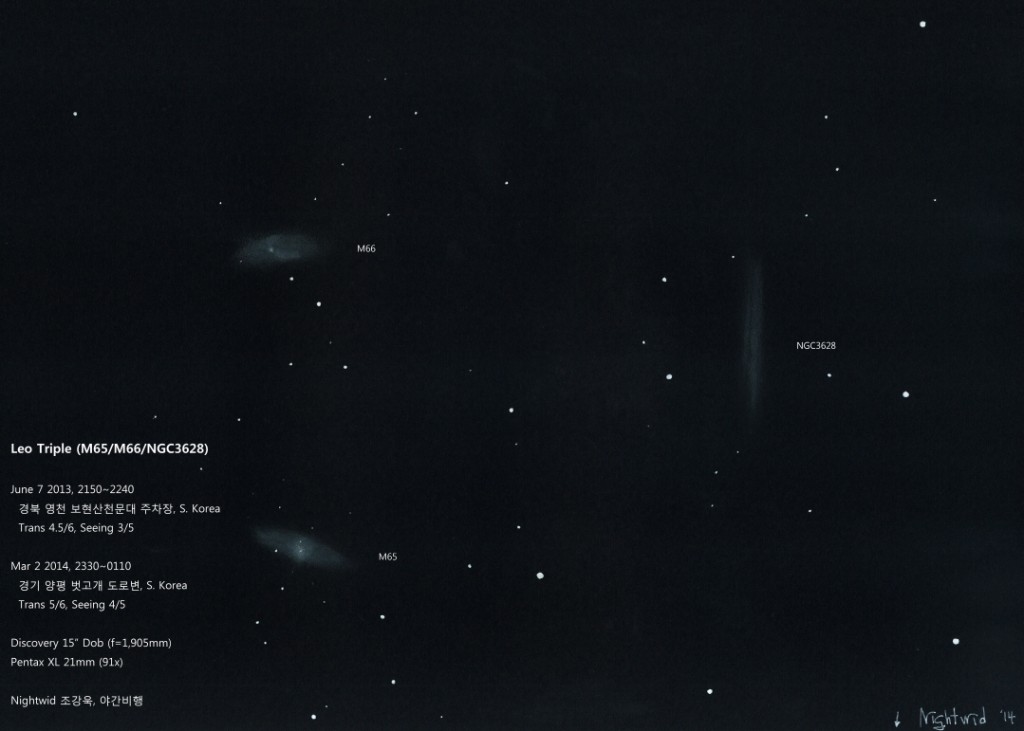
It is spring’s trio.
The dark lane in the 3628 is really fantastic!
Before this sketch, I always confused M65 and M66.
But now I can classify 65 & 66.
Sketch is magical tool in the visual astronomy. 🙂
Object Name : Leo triple
Object Type : Galaxies
Location : S. Korea
Date : Nov. 11, 2013
Equipment : Discovery 15″ Dob
Media : Black paper, Jelly pen, Pastel pencil
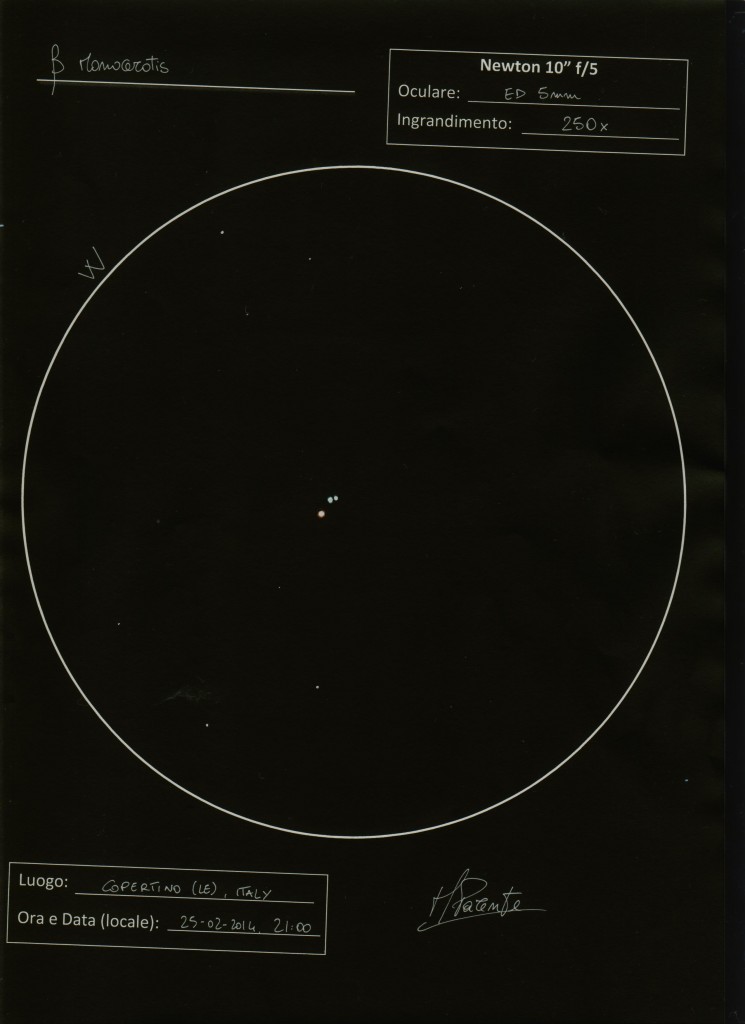
Hi Asod! Last night I observed Beta Monocerotis, which is called the most beautiful multiple star of our skies. I also loved it, so I decided to sketch the star with my dobsonian telescope 10” f/5. Seeing was not bad, so with 250x I could note easily all the components; but colours were not simple to note, all of them seem to me white, bluish and greenish…
Wonderful star!
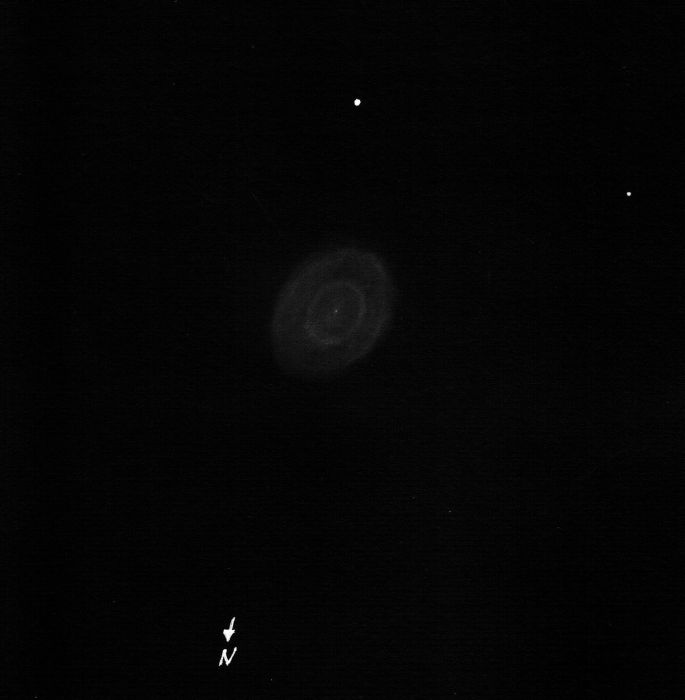
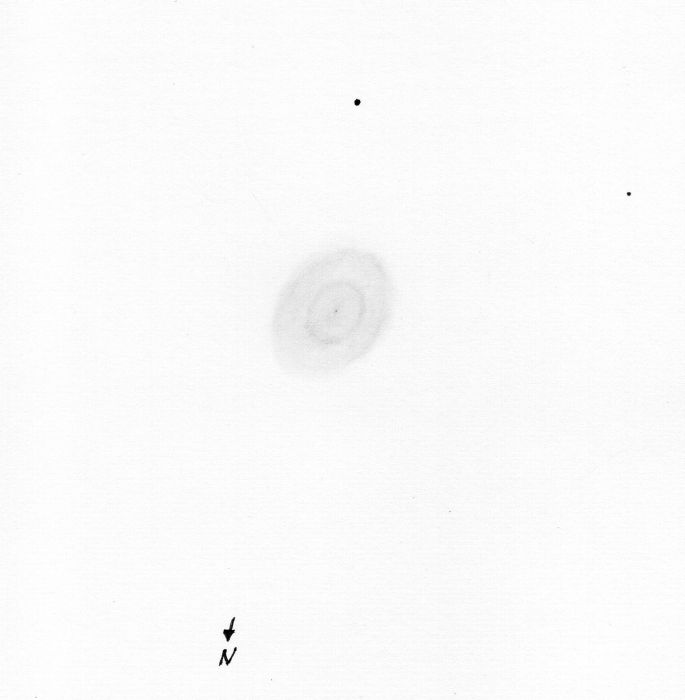
NGC 3242 “Jupiters Ghost” Hydra
Instrument: 16″
360-522x; No Filter
Place: Kreuzleshöhe 1100m,Germany
Time: 14.4.2013
fst: 6m3; SQM 21,49
Link to the Obersation:
http://www.astromerk.de/logbuch/2013/172-14-4-2013.html
Lg Hajü Merk
www.astromerk.de
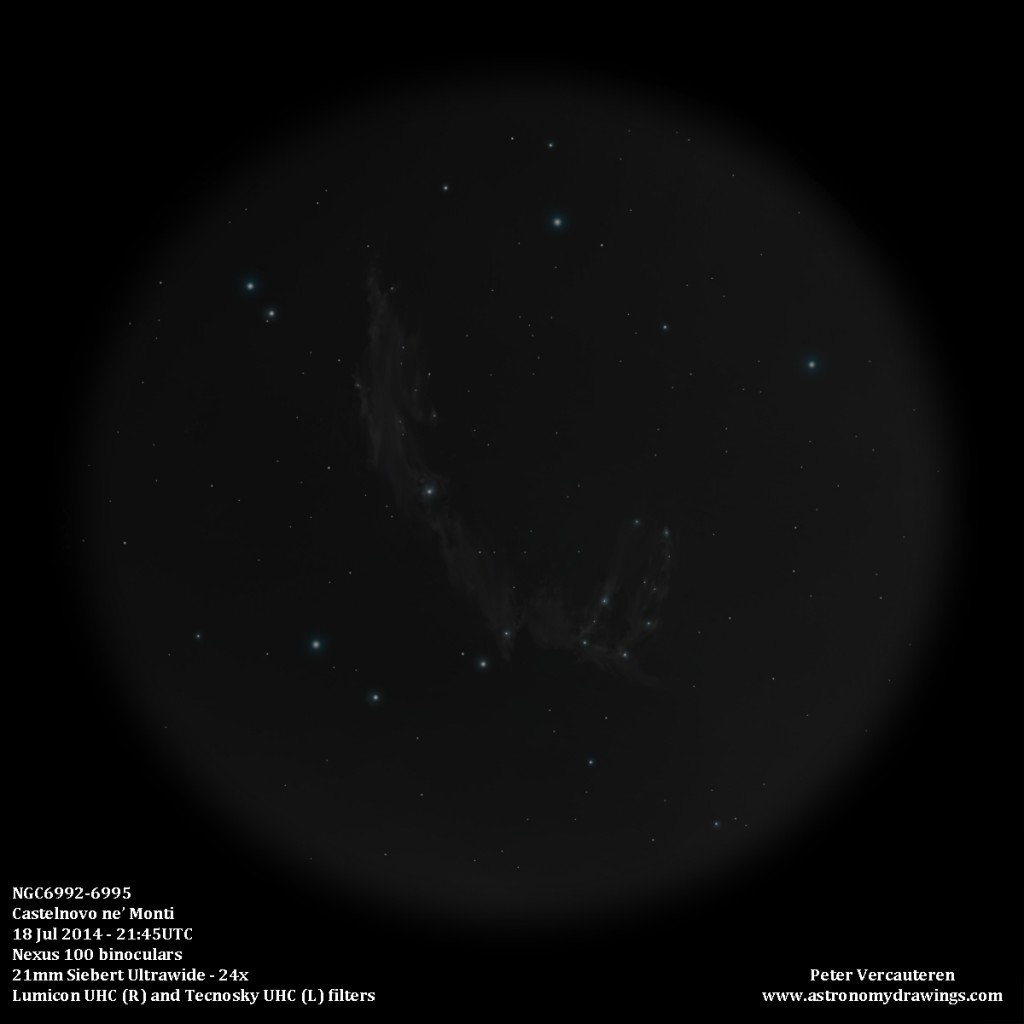
A pair of big binos are certainly complementary to a telescope and you’d be amazed at what they can reveal under a decent sky. Here’s how I saw the eastern Veil through my Nexus 100 binos under my Italian mountain sky, using a couple of 21mm Siebert Ultrawide eyepieces and a pair of UHC filters. According to my experience even a C8 would have a difficult time matching this, although obviously at only 24x the magnification was a lot lower. The field of view was cut slightly more than you’d expect with 80° eyepieces because it took me already about an hour and a half putting all this on paper (pencil on white paper) and given the very short eye relief of these eyepieces it was too tiring trying to scan the outer edges of the FOV every time. Well, I hope you like it…
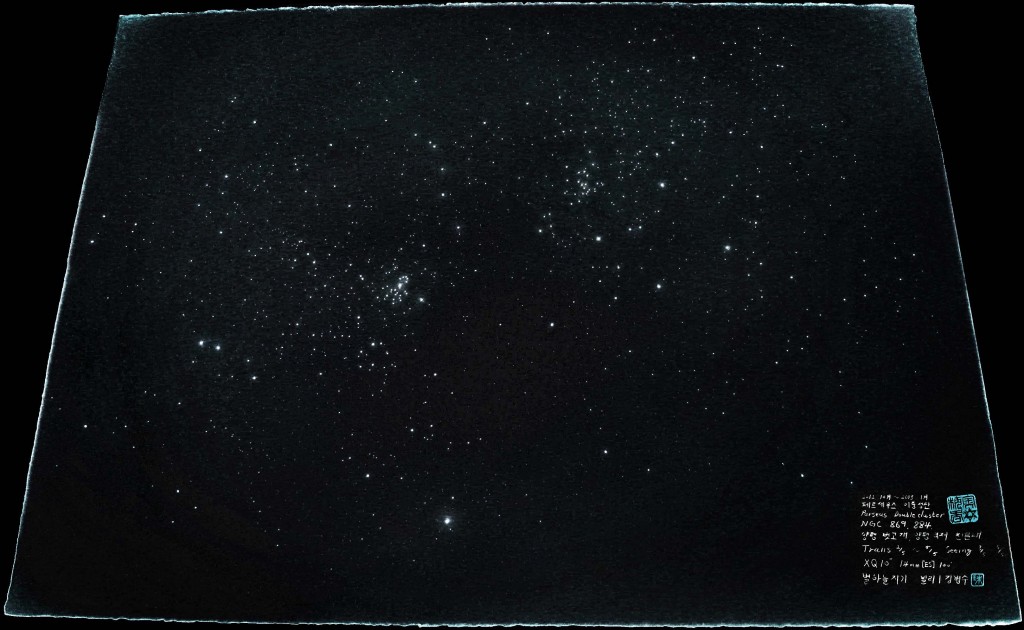
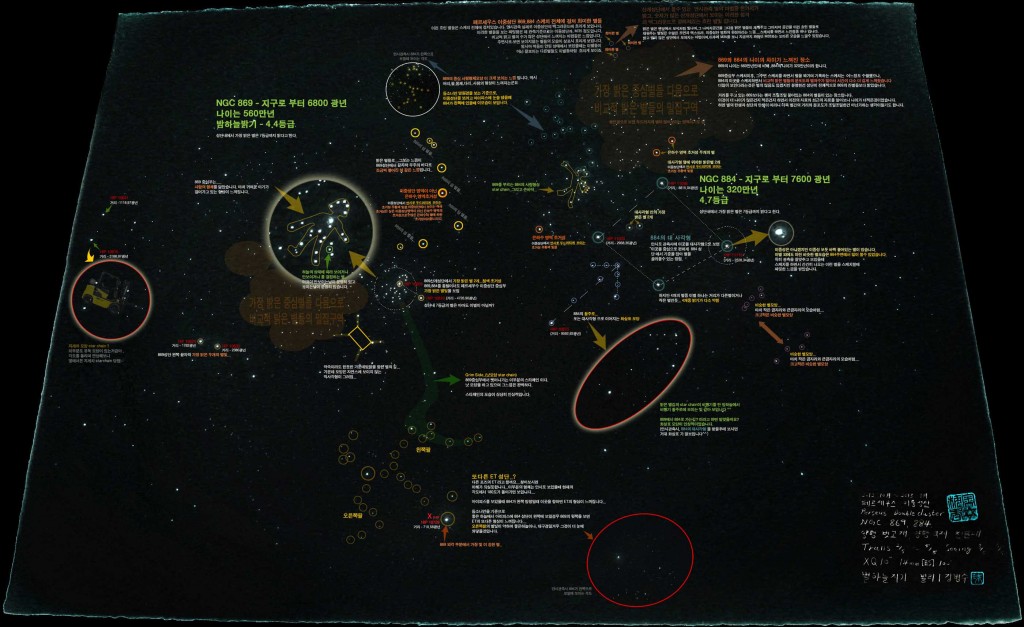
object Name – 3 months sketch ngc869 ngc884
[Location]
But-gogae Gosong-ri Yangdong-myeon Yangpyeong-gun Gyeonggi-do S.KOREA—–[6day observations]
International Observatory(Yard) Yongcheon-ri Yangpyeong-gun Gyeonggi-do S.KOREA—–[2day observations]
Media – pencil, charcoal
Paper – AQUARELLE ARCHES(Cold press)white Paper. [54.5cm x 78.8cm]
XQ 10″ Dob(f5) / ES 100′ 14mm “89x”
————————————————-
Perseus double cluster ngc869,ngc884
Under the night sky….
3 months sketch ngc869 ngc884..
2012. October start. 2013. January 11 END…..
click to image big size.